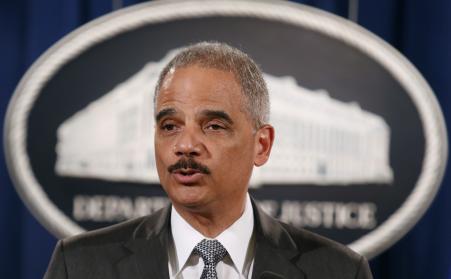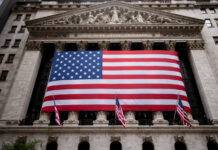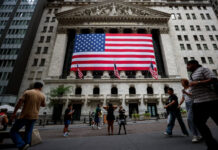

By Owen Davis –
Ninety days: That’s how long U.S. federal prosecutors have to tell Attorney General Eric Holder whether they have enough material to bring cases against individuals for wrongdoing in the 2008 financial crisis. It’s likely the last such appeal from the outgoing Holder, who made the announcement during a speech earlier this week.
Though many view Holder’s unusual announcement as political face-saving, it raises a serious question: Are financial felons going to get away? In light of Holder’s self-imposed deadline, IBTimes spoke with several former prosecutors and Wall Street watchdogs to identify those banks where prosecutors are most likely to find individuals to present with criminal charges – should any be forthcoming.
Despite protestations from Holder as to the difficulty of charging individuals, the government’s own disclosures in bank settlements seem to provide ample grist for such cases. “For Bank of America (NYSE:BAC), JPMorgan and [ratings agency] Standard & Poor’s, there are actually individuals named, either with their formal names in the complaints or by reference to their job titles,” says Bartlett Naylor, financial policy advocate at the organization Better Markets.
Since the fraud-riddled subprime mortgage market blew up in 2007, sparking a crisis that brought the financial system to its knees, major banks have paid tens of billions to settle criminal allegations with the DOJ. In most cases, however, they have neither formally admitted wrongdoing nor felt serious sanctions.
What’s more, no Wall Street executive or top-level manager has faced criminal charges. That fact has rankled accountability advocates and ordinary Americans alike – not to mention outspoken officials like U.S. District Judge Jed Rakoff and Benjamin Lawsky, New York’s top financial regulator.
For his part, Holder maintains his Justice Department has done everything it could to hold financial miscreants accountable. “To the extent that individuals have not been prosecuted,” Holder said Tuesday, “people should understand it is not for lack of trying.”
“Nonsense,” says former U.S. Assistant Attorney General Jimmy Gurulé, who faults Holder for a “poor and indefensible record” on charging bank officials. “Charges for white-collar crimes are filed every single day by U.S. attorneys across the country. Just because they’re more difficult with banks is not a legitimate excuse for bringing zero charges against individuals.”
Naylor, too, thinks the DOJ is eminently capable of charging invididuals. The statute of limitations has yet to run out for certain federal laws. “It’s the sheer fact that it must be a person who commits a crime,” he says. “We already have the Justice Department accusing companies of crimes. There must be people behind those crimes.”
Here’s where prosecutors might look:
Citigroup (NYSE:C)
Last July, Citigroup agreed to a then-record $7 billion settlement with the DOJ for “misleading investors about securities containing toxic mortgages.” Citigroup was among the top players in the subprime mortgage securities market, in which banks gathered masses of risky home loans, bundled them into bonds and sold them off as top-rated securities.
In one case, federal documents quote a Citigroup employee informing superiors about the shoddiness of their mortgages. “We should start praying… I would not be surprised if half of these loans went down.” Many of the loans did go down, but not before being bundled into mortgage-backed securities that Citigroup sold to unwitting pension funds and insurance companies, clients who thought they were buying products as safe as U.S. Treasury bonds. The practice was standard operating procedure.
On one hand, former prosecutors say, the complexity of such schemes makes it difficult to pin criminal liability on any one person. Given the pervasive nature of crisis-era fraud, cherry-picking a handful of individuals could seem unfair or vindictive.
“Responsibility remains so diffuse, and top executives so insulated,” Holder has said, “that any misconduct could again be considered more a symptom of the institution’s culture than a result of the willful actions of any single individual.” But is it still feasible to pinpoint the individuals most responsible?
Gurulé thinks so. “Complex criminal activity – even white collar crime – shares similar characteristics with traditional organized crime,” he says. In both cases, prosecutors can use time-tested methods to catch the big fish in a sea of wrongdoing. “The DOJ brings criminal charges against some midlevel person,” Gurulé explains, “and then offers that individual a plea bargain in exchange for testimony and cooperation against higher-ups.” The same principal, he says, can be applied to banks.
Bank of America
At nearly $17 billion, Bank of America’s 2014 settlement was the largest of any subprime-related payout. Though much of its grief stems from crisis-era acquisitions, the bank admitted to making misrepresentations in its own operations. Like others, bank officials knowingly failed to disclose that the loans in its highly rated subprime securities were significantly riskier than average loans.
Bank of America also happens to be the only firm where an individual has faced charges. When the bank paid a $1.3 billion civil penalty last year for fraud committed by Countrywide Financial, which it acquired in mid-2008, former Countrywide manager Rebecca Mairone was also found liable for civil fraud.
“If you can bring a civil fraud case successfully, you can bring a criminal fraud case successfully,” says William K. Black, a professor of law at the University of Missouri-Kansas City. Black served as a litigation director during the savings and loans debacle of the late 1980s and early 1990s, which saw hundreds of convictions of bank executives, directors and board members.
Black says prosecutors’ success in the Countrywide case bodes well for bringing cases against individuals. Due to quirks in fraud law, it’s easier to bring criminal fraud charges than civil ones – yet here prosecutors managed to win the more difficult civil liabilities. “There are slam dunk cases against many individuals,” Black says.
JPMorgan Chase
When JPMorgan reached its $13 billion settlement with the DOJ, it signed off on documents that describe a now-familiar episode: an employee raising red flags over a batch of dodgy loans, only to be overridden by higher-ups. The employee allegedly told an executive director and a managing director that “due to their poor quality, the loans should not be purchased and should not be securitized.”
Nevertheless, the loans were purchased and securitized – that is, packaged into bonds and widely sold – as the employee’s letter of concern circulated amongst managing directors. Her testimony to prosecutors would later prove crucial in bringing JPMorgan to the bargaining table.
That employee turned out to be Alayne Fleischmann, whose frustration at seeing JPMorgan executives escape charges would lead her to journalist Matt Taibbi at Rolling Stone, who wrote a long and scathing account documenting her travails.
But beyond being a black eye for JPMorgan, Fleischmann could prove essential in pointing the government toward individuals to charge, advocates and former prosecutors say. “Alayne Fleischmann knows names and has presumably identified names,” says Bartlett. The directors alluded to in settlement filings could be a good start.
Indeed, whistleblowers like Fleischmann were central to many crisis-era settlements. “The three big cases against the giants – Bank of America, Citigroup and JPMorgan – were all made possible by whistleblowers,” says Black. It remains to be seen, however, whether their firsthand accounts of alleged fraud will result in any new charges – or whether the mortgage-crisis era will end without the conviction of a single top-level bank official.
Source: ibtimes.com











